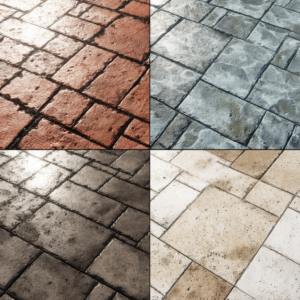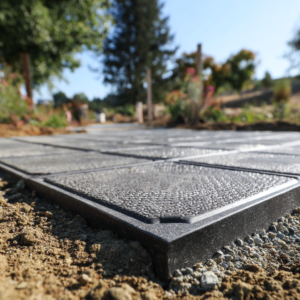When it comes to outdoor construction or renovation projects, brick pavers are a popular choice due to their aesthetic appeal and durability. However, over time, you may find yourself considering an upgrade or change in material. One question often arises: can you pour concrete over brick pavers?
The short answer is yes, but several important factors must be considered before moving forward with this project.
In this article, we will explore the steps involved in pouring concrete over brick pavers, the benefits and challenges, and whether this solution is right for you.
Jump to:
Can you pour concrete over brick pavers?
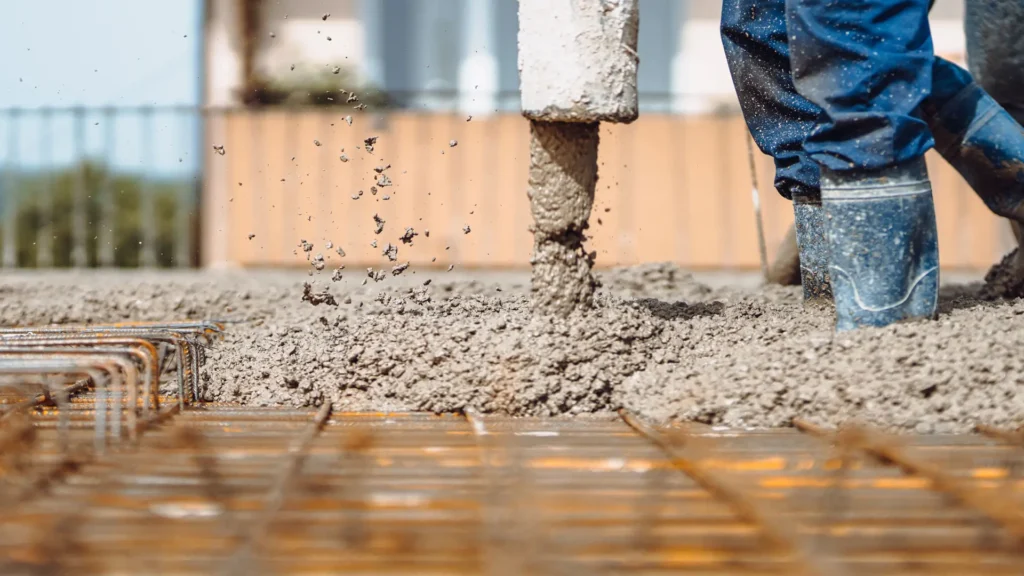
There are many reasons you might be thinking about pouring concrete over existing brick pavers. Perhaps the brick surface has become uneven due to ground settling, or maybe you are looking for a smoother surface that’s easier to maintain.
Concrete is also a durable material that offers a modern, sleek finish, making it an attractive option for patios, driveways, or walkways. Additionally, pouring concrete over brick pavers can save time and money compared to removing the pavers entirely.
However, poured concrete does not last very long. The initial upfront savings might seem interesting, but in two years tops you’ll have to start considering going through the entire process again.
A much better alternative would be to change the brick installation for concrete pavers, which can last for decades before having to be changed.
So yes, you can pour concrete over brick pavers – but there are much better alternatives and the success of the project depends on several factors that we will discuss next.
- Surface condition
First, the brick pavers must be in good condition. If the pavers are broken, loose, or uneven, they could cause problems with the new concrete surface. These issues need to be addressed before proceeding. - Preparation
Proper preparation is key to ensuring a smooth, long-lasting concrete surface. Pouring concrete directly over brick pavers without the right prep work could lead to cracking, sinking, or an uneven finish. This process involves cleaning the pavers thoroughly, making necessary repairs, and adding a layer to promote adhesion. - Thickness of the concrete layer
The thickness of the concrete layer will affect the outcome of the project. A thicker concrete layer will provide more durability and help compensate for any irregularities in the pavers underneath. Typically, a layer between 2 and 4 inches thick is recommended. - Drainage considerations
If your brick pavers are currently part of a system that allows for water drainage, covering them with concrete could lead to water pooling issues. You will need to ensure that the area is properly sloped, and that drainage is accounted for to avoid future problems. - Type of concrete
Choosing the right type of concrete is essential. For outdoor projects like patios, driveways, or walkways, it’s important to use concrete that can withstand weather conditions, including freeze-thaw cycles if you live in a colder climate.
How to pour concrete over brick pavers: step-by-step guide
If you decide to move forward with pouring concrete over brick pavers, the process can be done with some basic tools and materials. However, it’s always a good idea to consult a professional if you are unsure about any part of the project.
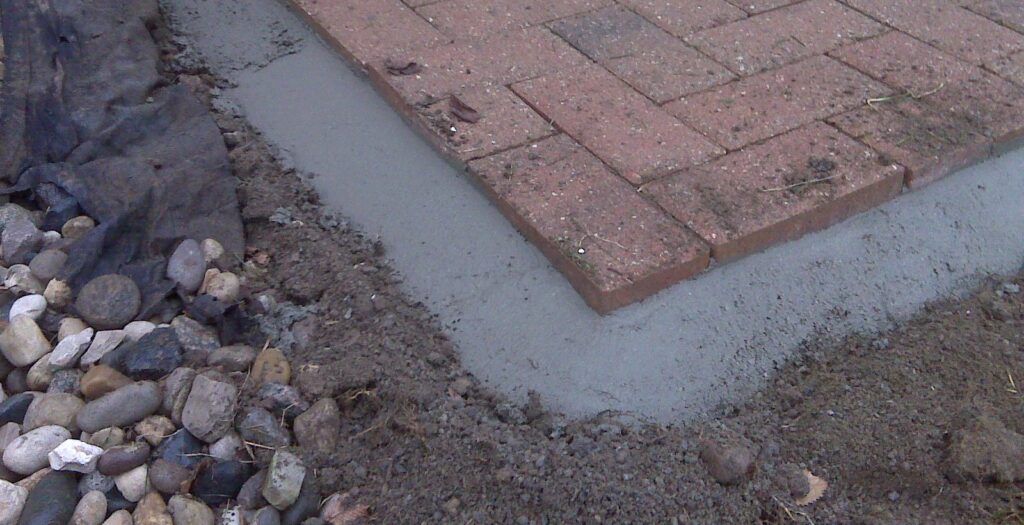
Step 1: Clean the surface
Dirt, grime, and debris on the brick surface can interfere with the concrete’s ability to bond. Use a pressure washer or stiff brush to clean the pavers thoroughly. Make sure the surface is completely dry before moving to the next step.
In this other article, we present a more detailed guide on cleaning pavers.
Step 2: Apply a bonding agent
A bonding agent helps the new concrete adhere to the existing brick pavers. You can use a liquid bonding adhesive specifically designed for concrete projects. Apply the bonding agent according to the manufacturer’s instructions and allow it to set.
Step 3: Prepare the concrete mix
Prepare a concrete mix suitable for your project. A standard mix will suffice for most outdoor applications, but you may want to consider additives if your area experiences harsh weather conditions.
The basic mix for concrete typically follows a 1-2-3 ratio by volume: 1 part cement, 2 parts sand, and 3 parts gravel. You can use a concrete mixer or, if you don’t have one, you can mix by hand on any flat surface.
To do that, start by mixing the cement and the sand using a shovel or hoe. Continue turning the mix until it is uniform in color and consistency.
Next, make a small well in the center of the dry mix and pour in about 75% of the water. Fold the mix into the water from the edges, gradually adding more water as needed while mixing until the concrete reaches the desired consistency.
The correct consistency for concrete should resemble thick oatmeal. You want it to be wet enough to be workable, but not so wet that it becomes runny. A good test is to scoop some concrete with a shovel, hold it up, and see if it holds its shape without dripping.
Step 4: Pour the concrete
Begin pouring the concrete over the brick pavers, starting at one end and working your way across the surface. Spread the concrete evenly using a trowel, making sure to fill any gaps or uneven areas.
Use a straight edge or a screed board to smooth the surface of the concrete. Work carefully to ensure that the surface is level and even. You may want to create slight slopes for drainage purposes, especially if you’re covering a large area like a patio or driveway.
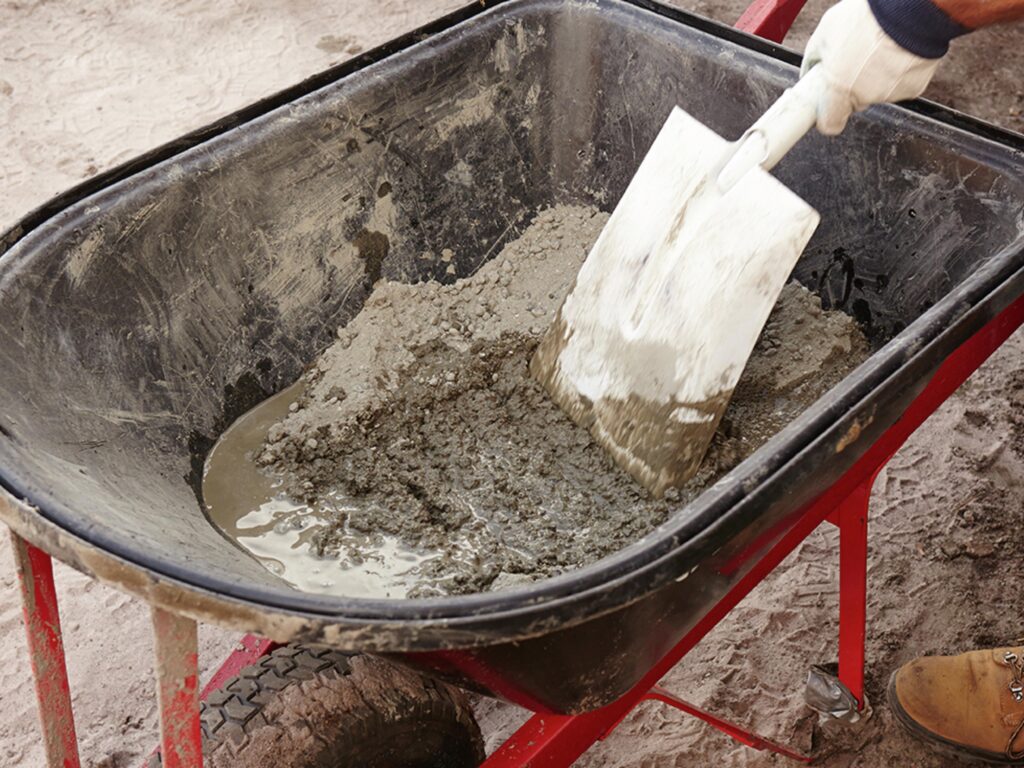
Step 5: Allow the concrete to cure
After smoothing the surface, allow the concrete to cure for the recommended time. This usually takes about 24 to 48 hours, depending on weather conditions and the thickness of the layer.
Once the concrete has fully cured, you may choose to apply a concrete sealant to protect the surface from stains, moisture, and wear.
Read also: Why seal pavers: 7 big benefits of hardscape maintenance
Can you pour concrete over brick pavers? Is it a good idea?
Yes, you can. With proper preparation, the right materials, and attention to detail, pouring concrete over brick pavers can give your outdoor space a fresh look while maintaining a stable base.
However, it is not a long-term cost-effective way to upgrade your patio, and it is a messy and difficult process, especially if you don’t have experience with hardscape. Once again, a much better alternative would be to simply change the brick pavers to concrete pavers.
That’s why it is always a good idea to hire professional hardscape contractors to help you. And if you happen to be around Sarasota County, FL, we here at JS Brick are ready to help you.
Get in contact today for a free estimate on our services.

